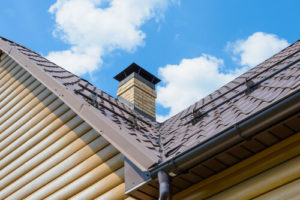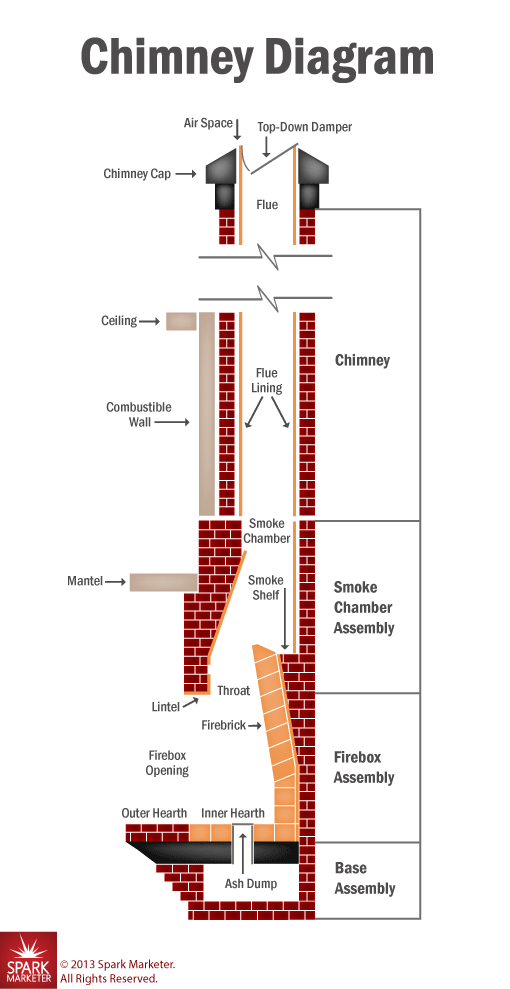by Mike O'Mara | Mar 12, 2019 | Chimney Dampers
Are the temperatures inside of your home not staying where you want them to? Here in the San Diego area, we experience some pretty hot days, so getting everything you need from your air conditioner is an essential part of staying cool and comfortable. Unfortunately for those with a chimney in their home, air can easily slip out through the flue. Not only does this brew frustration for people inside, but it also causes your energy bills to skyrocket. One simple solution might be to have a top-sealing damper installed. Learn more about these below, then count on our team to help you out every step of the way.
The Function Of A Damper
So, what is the main purpose of a damper? Well, they were designed to keep outside air out and indoor air in when your fireplace is not in use. On the flip side, they can be opened once you light a fire to ensure smoke and other fumes safely escape outside. All in all, they ensure you get ultimate comfort, whether you decide to put your fireplace to use or not.
Most older fireplace dampers are located in the throat of the chimney. These have been effective enough for homeowners in the past, but now there’s a better option – a top-sealing damper.
Top-sealing dampers are positioned at the top of your chimney, rather than the throat, and instead of a metal-on-brick seal, they come equipped with a rubber gasket that securely closes up the flue. This ensures no air goes in and no air comes out. While a throat damper can do an effective job, there is simply no comparison to this superior alternative.
Along with this, throat dampers are known to rust and corrode, which can trigger further damage for your system, and it often isn’t worth fixing it or replacing it with a similar model. If your throat damper is showing signs of wear, it may be time to consider upgrading to a top-sealing design.
Stop Wasting Money
A top-sealing damper will close things up tightly, so you don’t have to stress about wasting energy every month and losing money. Stop trying to cool your home to no avail, and invest in a more efficient damper today. It is a choice you’ll be happy you made when you get your monthly bills in the mail!
Trust In Us
If you are ready to get started, trust in the team here at Weststar Chimney Sweeps. We can do a thorough inspection and ascertain whether or not your damper is the cause of your higher energy bills. If so, we have the skills, experience, and certifications to get you the results you deserve.
Give us a call today, and we can set up an appointment at a time that works well for you. Our team is excited to help you out soon!
by Mike O'Mara | Apr 12, 2015 | Chimney Maintenance
Essential for the proper venting of smoke and other byproducts of combustion out of your home, a damper is one of the most important components of your chimney and venting system. Just as an opened window, a opened damper allows air to flow out through the chimney. When the damper is closed, it keeps warm air inside the fireplace and your house. For safety reasons, you should always be sure that your damper is opened when you have a fire burning, but when your fireplace is not in use, your damper should be closed to keep warm air out and cool air in your house during the summer and cold air out and hot air in your home during the winter. If your damper is old and worn out, it should be repaired or replaced as soon as possible to keep your home energy-efficient. To help you decide which type of damper would be best for your chimney, Weststar Chimney Sweeps would like to tell you more about the two different types of dampers and how we can assist you when it is time for a new damper in your chimney.

Throat Dampers
Found at the bottom of your chimney (or also known as the throat of your chimney) directly above your firebox, throat dampers are generally found in old masonry chimneys. Constructed from cast-iron, steel, or stainless steel, a throat damper rests on tracks directly above your fireplace. You operate this type of damper by moving a handle on the damper along its tracks to open and close it manually. Some prefabricated chimneys also have throat dampers; however, these steel dampers are often shaped as a square or circle and are opened and closed with a pull-down handle or a left-to-right lever and do not use tracks. You can also find newer throat dampers, which are inflatable devices that seal off the flue to any extraneous air that comes down the chimney, according to eHow. To ensure you have the best sealant, you should get the correct size for your inner chimney walls. Some disadvantages to this type of damper are they can be easily punctured, are not the most energy-efficient, and do not protect your chimney from birds and animals nesting inside your chimney.
Top-Mount Dampers
When you have an old throat damper that is beyond repairing, Weststar Chimney Sweeps will recommend that you install a top-mount damper, which sits on top of your chimney and can also serve as a chimney cap. Very energy-efficient, a top-mount damper is equipped with a silicone rubber gasket to provide an air-tight seal. Constructed from iron or steel, a top-mount damper functions well as a chimney cap when closed. This type of damper will protect your inner chimney from water leaks, debris, and bird and animal invasions. Although the main disadvantage of a top-mount damper is that it is more expensive than a throat damper, you will end up saving money on your heating and cooling bills as well as on costly repairs to your chimney caused by water leaks or nesting animals. Easy to operate, a stainless steel cable runs down your chimney to the firebox, and you simply pull on the cable to both open and close the damper.
Want to know more about these two different types of dampers? Contact Weststar Chimney Sweeps to let our staff help you decide which damper is right for your chimney.

